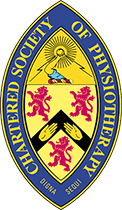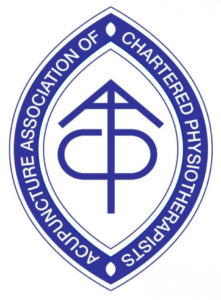Specialties within Physiotherapy
Here at Bramhall Park Physiotherapy, we have an excellent track record in helping people in and around Stockport, Cheadle Hulme, Hazel Grove and Bramhall with all their physiotherapy needs.
Our physiotherapy services will help you get back to normal as fast as possible.
Our Treatment Philosophy

Our treatment philosophy aims to empower people to take an active role in their treatment and rehabilitation. We listen carefully to your concerns and aspirations and prepare an individual programme to address your needs.
Our therapists aim to assess, diagnose and effectively treat your injury, abolish your pain, restore normal movement and prevent the problem reoccurring.
Injection Therapy
At Bramhall Park Physiotherapy Clinic, we provide an expert Injection Therapy service. Injection Therapy is an effective way to abolish or reduce pain and restore function by providing a ‘window of opportunity’ that allows your physiotherapist to integrate conventional physiotherapy treatment. By effectively treating the underlying cause of your pain your physiotherapist can help you achieve the best possible outcome.
Our clinic offers both Corticosteroid injection and Hyaluronic Acid injection (Ostenil injection). Both injections have their own use and therapeutic benefits. The choice depends on your presenting symptoms/condition, as well as your personal preferences. Your management plan will be tailored to your individual needs.
Types of Injection
Corticosteroid injection has been frequently used in clinical practice for many years. It is a powerful anti-inflammatory medicine which has a significant effect in reducing pain and improving function in the short-term. It can be useful when pain is severe and irritable, or where there is low-grade persistent pain, for which anti-inflammatory and analgesics may be required locally at the site of the preesnting symptom. However, Corticosteroid injections can cause side-effects, particularly with repeated use and when injecting on certain joints or some soft tissue conditions.
Hyaluronic Acid (HA) is a naturally occurring substance found in normal joints and tissues, and is therefore free of harmful side effects. HA injection has been shown to reduce pain and stiffness, with a particularly high success rate on mild-moderate Osteoarthritis (OA) knee joints, shoulder joints and small joints such as hand and feet. HA injection has been widely used in private practice, sports medicine and elite sports such as Premiership football and cricket. It is also very popular amongst the older active population who wish to keep active and control symptoms, without the risk of negative side-effects.
Why Choose Bramhall Park?
Injection Therapy falls within the Advanced Scope of Practice of a Chartered Physiotherapist. The governance and post-graduate training of Injection Therapy is very robust in the UK. As a result, very few private physiotherapy clinics throughout the UK offer this service.
At Bramhall Park Physiotherapy Clinic, injection therapy is performed by Dr. Sharon Braddock, who is an experienced injection therapist (performing over 200 injections each year). Dr. Braddock is also a Teaching Fellow of the Society of Musculoskeletal Medicine (SOMM), training post-graduate doctors and physiotherapists in Injection Therapy. Dr. Braddock’s extensive expertise in both teaching and practising injections enables her to provide a high quality service for her patients.
Your Treatment
Prior to any treatment, patients are given a thorough examination to confirm the diagnosis and to assess if it is appropriate and beneficial to receive injection therapy. Treatment options and the type of injection therapy will be discussed accordingly. Injection is performed under a strict aseptic technique and is delivered to the targeted area. You will be asked to take it easy following the injection, yet comfortable active movement is encouraged. You will be re-assessed 2-3 weeks following the injection, at this point pain and associated symptoms should be improved, and your physiotherapy rehabilitation can be re-commenced in line with your goals.
If you would like to receive further information about Corticosteroid injection, please contact us at [email protected] or call 07976 028171.
Julie Davidson – Acupuncture
Julie, Sharon & Clodagh are qualified in the use of Acupuncture and are members of the Acupuncture Association of the Chartered Physiotherapists (A.A.C.P.)
 Acupuncture is one of the skills many physiotherapists use as part of our approach to the management of pain and inflammation. Physiotherapists base their treatments on scientific research and clinical evidence that Acupuncture can reduce pain by stimulating the brain and spinal cord to produce natural pain-relieving chemicals such as endorphins, melatonin (which promotes sleep) and serotonin (to promote well-being), to name but a few. These chemicals assist the body’s healing processes and offer pain relief as a precursor to other treatments such as manual therapy or exercise in order to aid recovery.
Acupuncture is one of the skills many physiotherapists use as part of our approach to the management of pain and inflammation. Physiotherapists base their treatments on scientific research and clinical evidence that Acupuncture can reduce pain by stimulating the brain and spinal cord to produce natural pain-relieving chemicals such as endorphins, melatonin (which promotes sleep) and serotonin (to promote well-being), to name but a few. These chemicals assist the body’s healing processes and offer pain relief as a precursor to other treatments such as manual therapy or exercise in order to aid recovery.
AACP members combine Traditional Chinese Medicine (TCM) principles with scientific evidence as a means of reducing pain and promoting healing, always with the aim of enhancing physiotherapy treatments such as exercise and rehabilitation to promote recovery and improve quality of life.
There are several techniques for applying acupuncture and these are described below:
Conventional acupuncture involves the use of single-use, pre-sterilised disposable needles of varying widths, lengths and materials that pierce the skin at the acupuncture points. The physiotherapist will determine the locations of these points on the basis of an assessment of the cause of the imbalance. A number of needles may be used during each treatment, and these are typically left in position for between 20 and 30 minutes before being removed.
Trigger point acupuncture may also be used to facilitate relaxation in specific muscles following traumas, for longer-term unresolved muscle pain, or as a means of increasing muscle length in order to aid stretch and rehabilitation. In the latter case, the needle is inserted into the affected muscle until the tissue is felt to relax under the needle, which is then removed. Trigger point needling often produces an effect much more quickly, and therefore, does not require the 20–30-minute treatment time.
The use of acupuncture needling for the treatment of pain is supported by an ever-growing body of scientific evidence.
Scientific research has examined the effectiveness of acupuncture for various conditions. In recent years large studies have begun to emerge which have helped to support the benefits of acupuncture treatment. For example it is accepted that acupuncture can help tension-type headaches and pain of osteoarthritis, for example osteoarthritis of the knee, especially when it is used in conjunction with other treatments such as physiotherapy.
Acupuncture combined with physiotherapy is widely accepted within both the National Health Service (NHS) and private practice. This is evident in the recommendation by the National Institute for Health and Clinical Excellence (NICE) that acupuncture should be available as a cost-effective short-term treatment for persistent non-specific low back pain
NICE, 2009
Members of the AACP are required to keep up with a stated minimum number of hours of continuing professional development each year in order to remain on the register.
Julie, Sharon & Clodagh are in a unique position to combine acupuncture with other treatment methods, such as: